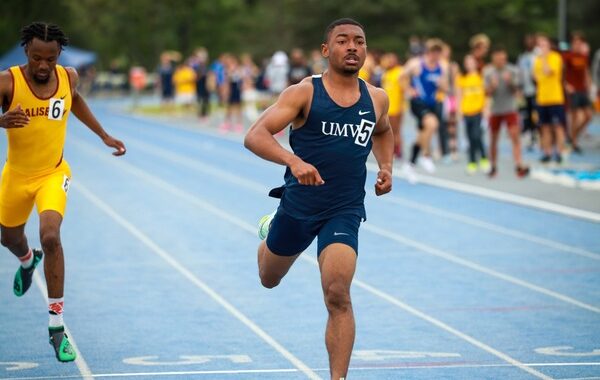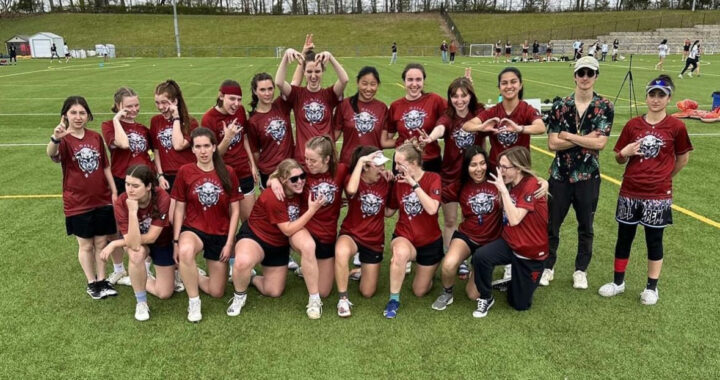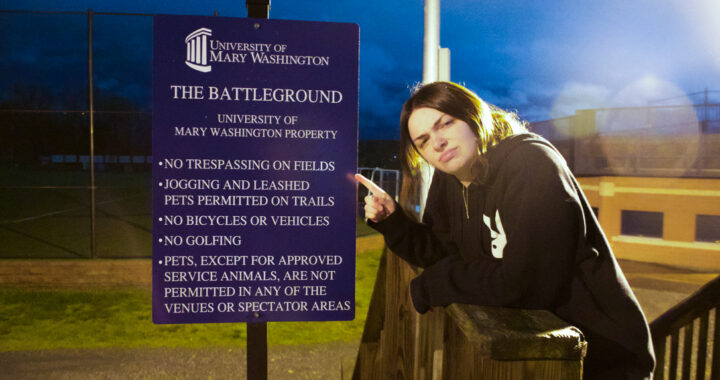Sports Teams Adjust To Cutbacks
5 min readThe men’s basketball team left the Mary Washington campus at 3:30 pm on Dec. 4 to travel to Hood College in Frederick, MD. In past years the team took a charter bus; however this season vans serve as the mode of travel to most of the conference games as they are more cost effective.
The vans seat eight people per vehicle, but they are much smaller than the buses and force many taller players to sit uncomfortably for the trip. Pre-season All-American senior Brandon Altmann is the team’s 6 foot 9 inch center, and he lamented the switch to vans after feeling the effects following the three-hour trip.
“I was pretty stiff after the ride, and trying to warm up was not as easy as it usually is,” Altmann said.
Altmann performed well in the game, but the Eagles fell to Hood 68-58. UMW was coming fresh off an impressive victory over last year’s Capital Athletic Conference champions, Wesley College, who is also one of the favorites to win the conference again this year. Hood finished seventh out of 10 teams in the CAC last year, and though it could be that UMW’s basketball team is just not as good as the team they fielded a season ago, the prior win would seem to diffuse that opinion.
Transportation is just one of the changes that the University of Mary Washington has made to the sports budget in an attempt to deal with the economic downturn that has struck almost everyone in the country.
UMW is trying to pinch every penny it can in order to adjust to the decline in funds, and as a result, the athletic budget has decreased from past years.
The athletic budget at Mary Washington consists of many factors, as there is money set aside to pay the Sports Information Officer, to cover athletic fields’ maintenance and team sports, but the primary athletic part of the budget is set aside for intercollegiate athletics.
The intercollegiate athletic’s budget had risen each of the last three years and saw astonishing increases in the past two years [over a 9.9 percent increase in ’07-’08 and an 11.43 increase in ’08-’09]. However, for the ’09-’10 school year the IC budget was cut by 2.9 percent, from $1,234,749 last year to $1,209,475 this year, a budget cut of $25,264.
The reduction of the intercollegiate budget has caused teams to change the way they used to do things to try and cut costs to fit into the smaller budget. Men’s basketball coach Rod Wood commented on some of the changes that his team has made early in the season to try and adjust.
“We take vans to all away games in our conference except York, Wesley and Salisbury [the farthest games for us].” Wood said. “For those games we share a bus with the girls’ basketball team and are forced to leave earlier on game day than if we had our own bus.”
Though that may seem to be a minor change, the discomfort and possible effect on play seem quite real. Even when the basketball team does get the luxury of a bus, they have to share it with the women’s team and are forced to leave earlier than usual in order to fit both teams’ schedules.
Wood continued on to state some major changes he is implementing this year for budget reasons as well.
“We also only bring about 12 players on the travel team [this year]. Young players are forced to sleep three to a room in some instances.”
In past seasons, as many as 14 or 15 players would be on the “travel team,” but that number was slashed this year by Wood to adjust with the cuts.
As for overloading on rooms, freshman forward J.R. Gray was one of the players who was left on the short end of that stick on most of the team’s road games this season.
“I usually try and get a cot from the front desk, but if that’s not available I will deal with it the best I can, and that may mean sleeping on the floor,” Gray said.
The Mary Washington women’s volleyball coach Dee Conway was frustrated but had a somewhat positive view of the budget situation at the university.
“Budget cuts are having an impact on [everyone] – some more than others,” Conway said. “We are just trying to deal with things best we can.”
This positive approach is what most coaches here at UMW are trying to take. They understand that the economy is the reason for the budget cuts and that Mary Washington is not just slashing costs simply to save a dollar or two.
An interesting part of the budget cuts, is the things in the athletic budget that the university hierarchy decided to increase in these troubling times.
The sports information officer received a raise while the school is seemingly scrambling to save every penny they can, but that is indeed what happened as that position’s salary was increased by 4.09 percent.
Meanwhile, the athletic fields’ maintenance was decreased from $118,648 last year down to $114,063 this year, a decrease of 3.86 percent and the new total marks the lowest that the fields’ maintenance budget has been in the past four years.
The field of “team sports – other” was increased a sizeable amount as the budget for that section of the athletic budget rose by 15.65 percent. This increased the allotted amount for that section from $482,000 in ’08-’09 to $557,431 in ’09-’10, an uptick of $75,431 in funds.
Mary Washington head Athletic Director Ed Hegmann could not be reached for comment and the Assistant Athletic Directors declined to comment.
Mary Washington sports aren’t the only athletics around dealing with financial issues. Fellow CAC school St. Mary’s College instituted old-school fundraisers this year, such as selling candy bars and holding car washes, to try and gain extra funds for the athletic department. St. Mary’s lacrosse team has reportedly been gaining aid from donations to the team from alumni and parents to help pay for the team’s travel and minor equipment needs since 2006.
Though a much larger school, the University of Virginia is not immune to the economy either.
In fact, they put goals in place of where the university wants to be in the year 2020. UVa separates their athletic teams into tiers [top-tier sports down to fourth-tier sports] and the funding a sport receives depends on what tier they are in.
For instance, football is a top-tier sport and receives full grants-in-aid while baseball is listed as a fourth-tier sport and only receives need-based financial aid. UVa figures that this system will allow them to keep their major sports that bring in the most revenue going strong while still saving money by cutting costs of less heralded programs.
Regardless of the sport and regardless of the college or size of that school, all collegiate sports are dealing with cuts. The recession will eventually end, but until then, it’s all about colleges weathering the storm and simply making due with what they have.
– Zach Moretti, William Wright, Eric Rolander, and Nathaniel Bent contributed to this story.











